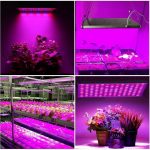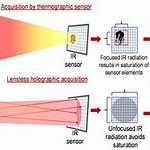Last Updated on 12 months by Francis
Light therapy lamps have become increasingly popular among plant enthusiasts as a means of promoting growth and health. The lamps emit a specific type of light that mimics the sun’s natural spectrum, which is essential for plant growth. However, there has been speculation surrounding the effectiveness of these lamps in providing the necessary light requirements for plants. In this article, we will explore the question: Do light therapy lamps work for plants?
Contents
The Basics of Light Therapy Lamps for Plants
Light therapy lamps are often used by people to treat seasonal affective disorder (SAD) or to improve mood and energy levels. However, these lamps are also commonly used by plant enthusiasts to provide additional light to indoor plants. These lamps emit a specific wavelength of light that is similar to the light that plants need for photosynthesis. The light from these lamps can be used to supplement the sunlight that plants receive, and in some cases, replace it altogether.
How Do Light Therapy Lamps Work for Plants?
The light from these lamps is often referred to as “grow lights” because of their ability to promote plant growth. The lamps emit light in the blue and red spectrum, which are the two most critical wavelengths for plant growth. Blue light helps plants grow leaves and stems, while red light promotes flowering and fruiting. The amount of light, as well as the duration of exposure, is crucial to the success of using these lamps for plants.
Benefits of Using Light Therapy Lamps for Plants
Light therapy lamps can be an excellent way to supplement or replace natural sunlight for indoor plants. Some of the benefits of using these lamps include:
- Increased growth and plant health
- Promotion of flowering and fruiting
- Extended growing seasons
- Ability to grow plants in low-light environments
- Ability to grow plants year-round
Do Light Therapy Lamps Work for All Plants?
While light therapy lamps can be beneficial for many plants, not all plants require the same amount or type of light. Some plants require more light than others, while some need specific wavelengths of light to thrive. Additionally, some plants may have adverse reactions to too much or too little light.
Using light therapy lamps can be a great way to supplement or replace natural sunlight for indoor plants. These lamps emit specific wavelengths of light that can promote growth, flowering, and fruiting in many types of plants, including succulents, herbs, vegetables, and flowers. However, it’s important to choose the right lamp and determine the right amount and duration of exposure for each plant. Additionally, some plants may not benefit from these lamps, such as shade-loving plants or those that require specific amounts of darkness each day. Monitoring plant health is crucial to ensure that they are not being exposed to too much or too little light.
Which Plants Benefit from Light Therapy Lamps?
Plants that typically thrive under light therapy lamps include:
- Succulents
- Herbs
- Vegetables
- Flowers
Which Plants Do Not Benefit from Light Therapy Lamps?
Some plants may not benefit from light therapy lamps, including:
- Shade-loving plants
- Plants that require a specific amount of darkness each day
- Plants that are sensitive to heat
How to Use Light Therapy Lamps for Plants
Using a light therapy lamp for plants requires careful consideration of the type of lamp, the amount of light, and the duration of exposure. Here are some guidelines for using these lamps effectively:
Choose the Right Lamp
Not all light therapy lamps are suitable for use with plants. Look for lamps that emit blue and red light in the correct spectrum for plant growth. Avoid lamps that emit too much heat, as this can damage plants.
Determine the Right Amount of Light
The amount of light that plants need varies depending on the type of plant. Consult a gardening guide or talk to a professional to determine the right amount of light for your plants.
Determine the Right Duration of Exposure
The duration of exposure to light therapy lamps is also crucial. Some plants may require only a few hours of exposure each day, while others may need several hours.
Monitor Plant Health
It’s important to monitor plant health when using light therapy lamps. If plants are getting too much or too little light, they may show signs of stress or damage. Watch for signs of yellowing leaves, stunted growth, or wilting, and adjust the amount of light or duration of exposure as needed.
FAQs – Do Light Therapy Lamps Work for Plants?
What is light therapy for plants?
Light therapy for plants involves the use of specialized lamps that emit specific wavelengths of light to provide the necessary light spectrum for plants to grow and thrive. It is also known as a grow light.
How does light therapy benefit plants?
Light therapy for plants is beneficial in three ways. Firstly, it provides the necessary light spectrum for photosynthesis, which is a biological process for plants to produce energy. Secondly, it helps regulate the plants’ growth and development stages. Lastly, light therapy stimulates flowering and fruiting in plants.
Can any light therapy lamp be used for plants?
Not all light therapy lamps are suitable for plants. The light spectrum emitted from the lamps needs to include wavelengths within the blue and red regions of the spectrum, as these are the most important for plant growth. Therefore, only specific grow lights or plant lights should be used to ensure optimal growth.
Are there any disadvantages to using light therapy lamps for plants?
One potential disadvantage is that they can be expensive to purchase and operate. Additionally, if the plants are exposed to too much light, it can damage the plant’s leaves or cause it to dry out. It is important to select the appropriate brightness for the specific plant species.
How long should plants be exposed to light therapy lamps?
The length of time that plants should be exposed to light therapy lamps varies depending on the plant species and growth stage. Generally, most plants require 12-16 hours of light per day for good growth. It is important to research and understand the specific lighting requirements for different plants before using light therapy lamps.

.jpg)
.jpg)
.jpg)



